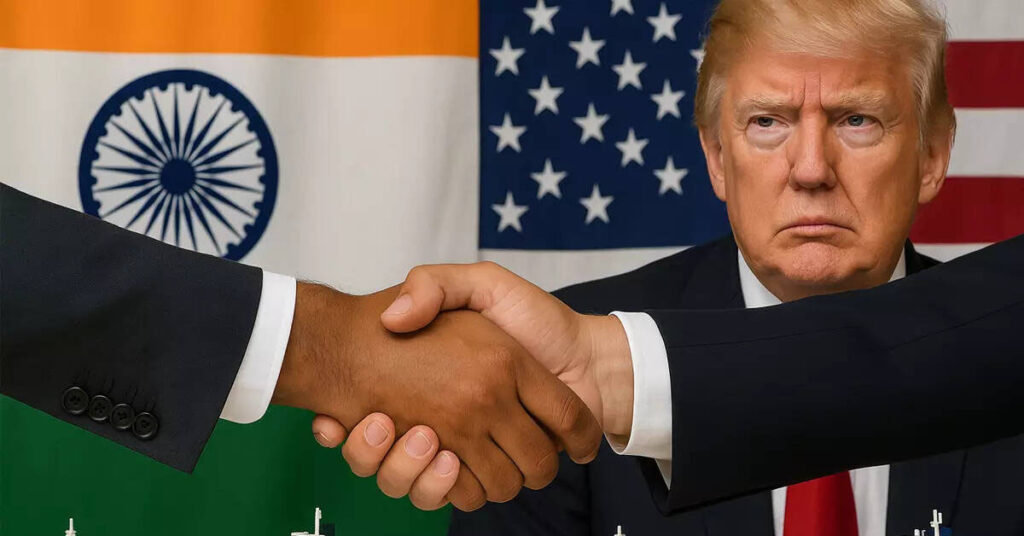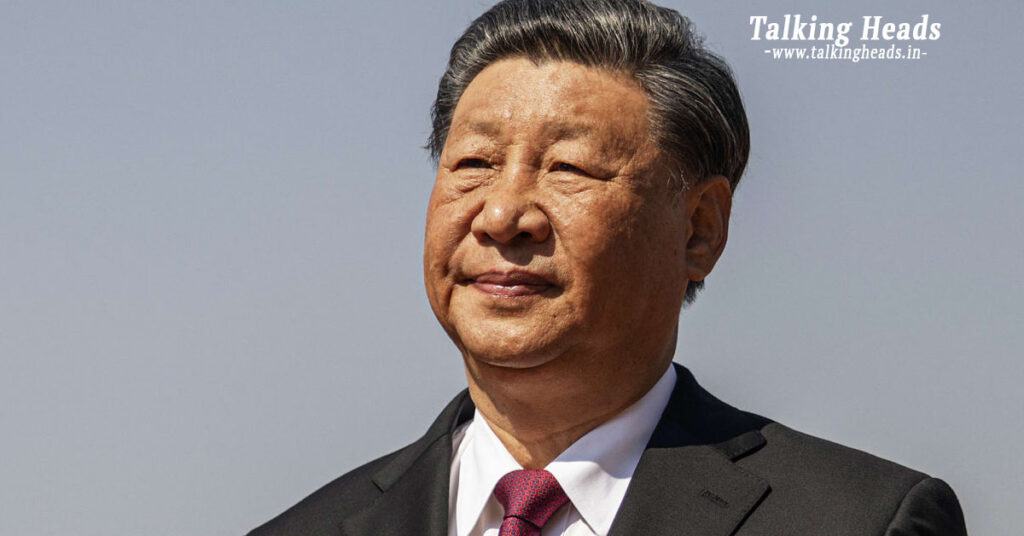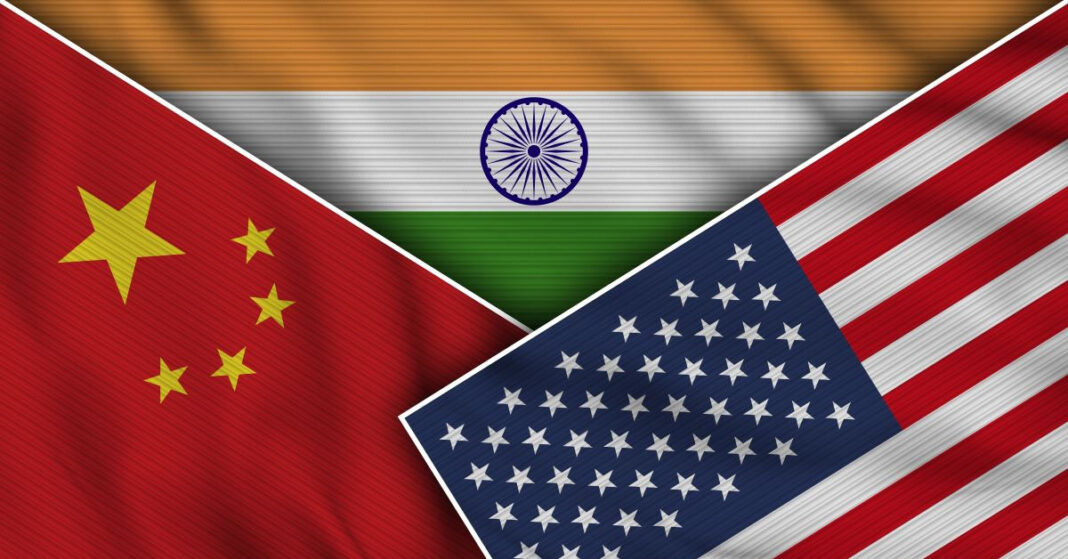India’s foreign policy is under fresh scrutiny after recent global developments raised questions about its “multi-alignment” strategy. With the United States threatening higher tariffs, China signaling a cautious engagement, and experts offering contrasting assessments, the debate over whether India’s approach is faltering has intensified.
Table of Contents
US Tariff Threats Put India Under Pressure
On August 13, US Treasury Secretary Scott Bessent warned that if talks between President Donald Trump and Russian President Vladimir Putin in Alaska failed, India could face an additional 25% tariff hike. This statement rattled New Delhi’s diplomatic circles, as the US remains India’s largest trading partner.

The prospect of higher tariffs highlights a core vulnerability in India’s external policy: maintaining strategic autonomy while balancing ties with major global powers. Washington’s move suggests that India may be paying the price for refusing to fully align with any single bloc.
Critics Question India’s Multi-Alignment Strategy
Geopolitical analyst argued that India’s multi-alignment approach is backfiring. Writing on social media, he described it as a strategy that was supposed to make India indispensable but has instead left it vulnerable.
“In trying to be everyone’s friend, India has become a pressure valve,” he observed, suggesting that India is often singled out for pressure because it is “big enough to matter but not strong enough to retaliate effectively.”
His comments underline a key criticism: that multi-alignment may look pragmatic on paper, but in practice, it risks leaving India isolated when global power rivalries sharpen.
Modi’s Meeting with China Changes the Tone
However, his tone shifted after Prime Minister Narendra Modi’s meeting with Chinese Foreign Minister Wang Yi on August 19. Sharing the picture of the meeting, Bertrand praised Modi for showing political courage.
He contrasted India’s outreach to China with Europe’s struggles, saying European leaders lack the strategic autonomy that Asian powers are increasingly asserting. “If Europe had taken a similar approach with Russia, Trump would not have had such leverage,” he wrote.

This shift in narrative illustrates how India’s balancing act—especially with China—remains a subject of global debate.
Experts Defend India’s Strategic Autonomy
expert stressed that India’s refusal to compromise its interests, even in tough negotiations with Washington, shows its determination to preserve strategic autonomy.
“India has not bent under US pressure. It continues to engage both the US and China on its own terms,” Ashraf explained. He acknowledged that China and Russia can push back harder against Washington, but emphasized that India’s choices reflect its realities, not weakness.
India’s Engagement with China: Calculated or Risky?
Prime Minister Modi’s upcoming visit to China for the Shanghai Cooperation Organization (SCO) Summit between August 31 and September 1 has raised eyebrows. This will be his first trip to China in seven years, coming amid unresolved border tensions in eastern Ladakh.
India’s outreach to China is not sudden or reactive. Modi had also met President Xi Jinping in Kazan last year, stressing that India is seeking to stabilize relations in order to expand its economic and strategic space while preventing further border clashes.
Still, skepticism remains. Chinese scholars, such as Lin Minwang of Fudan University, told The New York Times that while Beijing welcomes dialogue, it will not compromise on core interests, including its close ties with Pakistan. This leaves open the question of whether China will match India’s commitment to de-escalation.
Economic Stakes: Can India Afford to Alienate the US?
Beyond diplomacy, the economic consequences loom large. The US has already imposed a 50% tariff on certain Indian goods, set to take effect on August 27. With bilateral trade valued at $131.84 billion in 2024–25, any disruption would hit India’s economy hard.
Bloomberg warned that if India chooses to stand firm rather than yield to US pressure, it risks losing its biggest trade partner and access to the world’s largest consumer market. While strengthening ties with China or pursuing domestic reforms may help, experts caution these steps cannot fully replace American demand.
India-China Economic Dependence Runs Deep
Despite ongoing border disputes, India’s trade with China continues to grow. In 2024–25, bilateral trade reached $127.7 billion, making China India’s second-largest trading partner.
India remains heavily dependent on Chinese technology and raw materials. Electronics, telecom networks, smartphones, and pharmaceutical ingredients all rely on imports from China. Even critical sectors like renewable energy and electric vehicles need rare earths, much of which India sources from China.
Any disruption in this supply chain has severe consequences. For instance, China’s recent restrictions on rare earth exports hit India’s auto sector hard. At the same time, China values India’s vast consumer market as a vital outlet for its exports—making the relationship one of mutual necessity, despite geopolitical rivalry.
Balancing Between Washington and Beijing
India now faces a stark dilemma: maintain independence or risk over-reliance on one side. While the US offers global markets and technological partnerships, China provides manufacturing strength and supply chains. Both relationships are indispensable, yet both are fraught with tensions.

“This is not about breaking up with America or cozying up to China. India is pursuing its interests in a multipolar world. Trade with China has grown even during tense times, showing the complexity of the relationship,” expert said.
Conclusion: Navigating a Difficult Diplomatic Path
India’s foreign policy is at a critical juncture. The US tariff threat, growing dependence on Chinese imports, and unresolved border disputes all underscore the fragility of multi-alignment. Yet, India’s insistence on strategic autonomy also signals resilience.
As Modi prepares for the SCO Summit in China, the world will watch closely to see whether India can balance competing powers while protecting its economic and strategic interests. Whether multi-alignment proves a strength or a weakness may ultimately depend on how deftly India navigates this moment of global uncertainty.










